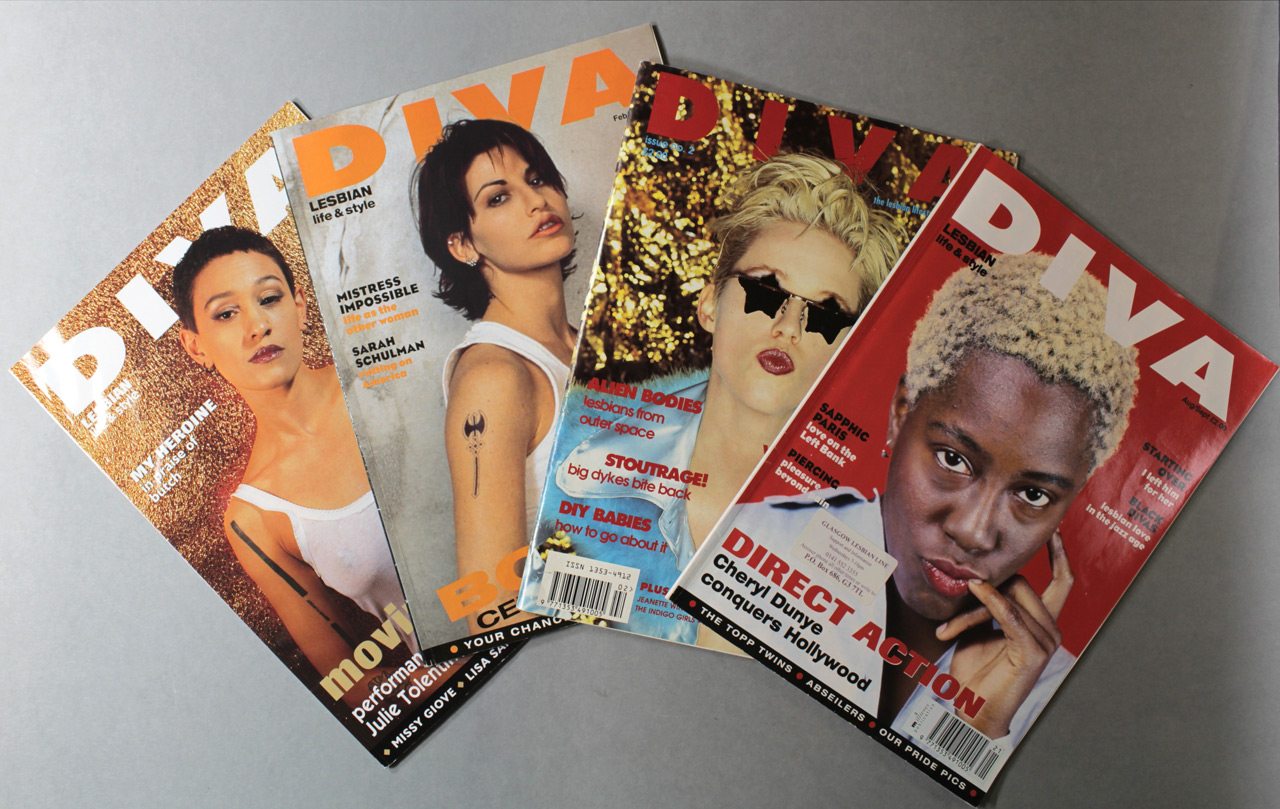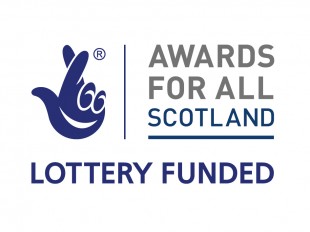by Laura Wylie

Upon discovering the Lesbian Archive (LAIC) and LGBTQ Collections at Glasgow Wom-en’s Library, I was instantly drawn to the collection of queer publications, in particular, the early issues of DIVA magazine. First published in March 1994, DIVA has gone on to become Europe’s most popular mainstream lesbian and bisexual magazine. A keen reader of modern DIVA, I was eager to investigate how earlier issues compared, and to map trends throughout the past twenty years in relation to assimilation politics.
It quickly became clear, however, that in my time working with the magazines, I would not be making any profound observations nor useful contributions to queer publication research… Despite my very best efforts to focus on the task in hand, each time I opened the magazines, it was like entering a big feminist, sex-positive, dykey time machine, whereby with the assis-tance of the likes of Lois Weaver, Amy Lamé and k.d. lang, I discovered a queer history that I didn’t even know existed. Rather than carrying out valuable research, my time with the magazines was spent swooning over the beautiful butch ‘coverdykes’, taking ridiculous quizzes to determine my chances of “finding Gina Gershon wrapped under my tree for Christ-mas”1 and in fits of laughter at the sprightly lonely hearts column, also known as ‘Dial-A-Diva’. That said, ‘Dial-A-Diva’ proved very insightful as to the somewhat pressing demands in the world of queer dating in the 90s, with some personal favourite ads including “urgently requires butch, passionate, tattooed imaginative F. If this isn’t you, call anyway” and “F seeks uncomplicated Ellen look-a-like”.
Such ads are reflective of the earlier issues of DIVA magazine more generally. They are light-hearted, upbeat, and full of confident, hilarious women who are unapologetically queer. With articles from ‘Confessions of an Ex-Heterosexual’2 to ‘What’s the Point of Men?’ (spoiler: “I suppose it’s a bit like the House of Lords, you wouldn’t invite them if you were starting from scratch, but they’re here now”),3 each time I left the archive, I did so with sore ribs from hours of non-stop laughter. Perhaps, in a time when queer women had fewer basic rights and faced even greater discrimination than they do today, DIVA provided them with some much needed escapism and queer joy.
That is not to say that early copies of DIVA magazine weren’t also concerned with more seri-ous political issues such as Section 28, access to reproductive technologies and HIV/AIDS. Rather, it provides a broad range of features from the personal, to the political, to the outra-geously frank, which collectively work to provide a snapshot of the lives of lesbian and bi-sexual women during that time. Be it for younger generations of LB women who, like myself, are keen to find out what our fellow queers got up to while we were pottering around in nap-pies, or for those simply wishing to take a trip down memory lane, that GWL is preserving this treasure of a publication and allowing us to engage with it, is a very special treat indeed.
1) DIVA Magazine, December 1997, p. 74.
2) DIVA Magazine, June 1996, p. 66.
3) DIVA Magazine, February/March 1997, p. 66.
—
Return to The Personal is Political: Lesbian Life or the LGBTQ Collections Online Resource.
—


